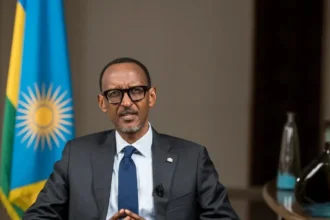Central to Pretoria’s plan is the establishment of an Export Support Desk, which will assist businesses in identifying and accessing new international markets. This is complemented by a Competitiveness Support Program that offers liquidity relief and access to equipment, helping exporters withstand the blow of increased U.S. duties. The government is also tapping into the Local Production Support Fund (LSF) to finance industrial substitution projects aimed at reducing dependency on imports and reinforcing domestic manufacturing. A temporary exemption from competition laws will allow South African exporters to collaborate sharing logistics and market intelligence costs without regulatory penalties.
Employment safeguards amid rising job losses
With the nation’s unemployment rate already at a staggering 32.9% (and rising to 43.1% if discouraged job seekers are included), Pretoria is prioritizing social stability. It will use the Unemployment Insurance Fund (UIF) to support affected workers, particularly in vulnerable industries. South African Reserve Bank (SARB) Governor Lesetja Kganyago has warned that the U.S. tariff hikes could result in the loss of up to 100,000 jobs, primarily in the automotive and agricultural sectors. Exports of automobiles to the United States once a major market have already dropped by over 80% in April and May 2025. Agricultural products such as citrus fruits, table grapes, and wines are also at significant risk.
President Cyril Ramaphosa has denounced the move as a betrayal of fair trade principles, noting that more than 75% of U.S. wares enter South Africa duty free. In May, South Africa had even offered new investment opportunities and liquefied natural gas (LNG) purchases from the U.S. proposals that were left unanswered.
Strategic diversification toward emerging markets
South Africa is accelerating its trade diversification strategy, focusing on the African Continental Free Trade Area (AfCFTA) to boost intra African trade. New trade agreements are also in development with Japan, the European Union, and key Asian partners such as China and Thailand, particularly to open new agricultural markets. Pretoria believes that greater integration within regional value chains and tapping into high-growth Asian economies will help offset losses from U.S. sanctions and drive sustainable export growth in the medium to long term. While South Africa’s strategy is bold and multifaceted, there is uncertainty around its immediate effectiveness. Analysts estimate that the U.S. tariffs could reduce South Africa’s GDP growth by 0.2 percentage points.
The success of the government’s plan will hinge on several factors: the responsiveness of its institutions, the speed with which businesses can access new markets, and the resilience of export industries to adapt. With $17.64 billion in bilateral trade recorded in 2023, the U.S. remains South Africa’s second largest trading partner, and the economic fallout could reverberate for years to come.
















